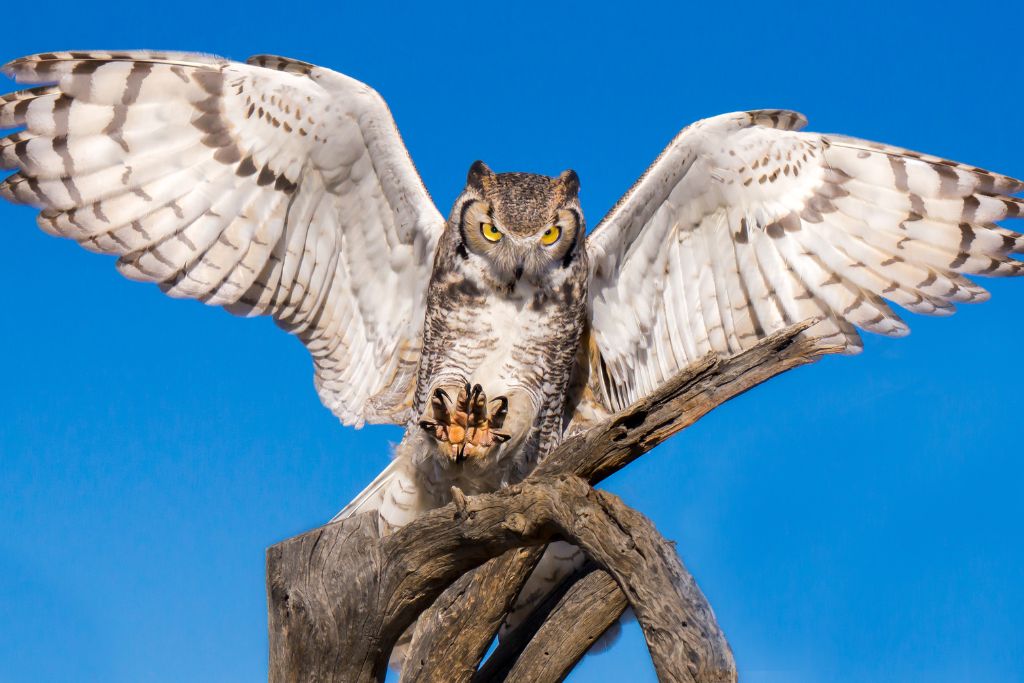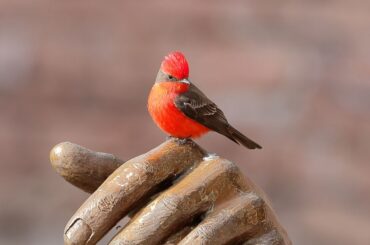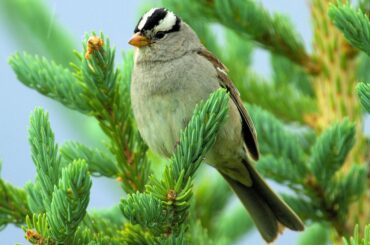Are you ready to embark on a captivating journey into the enchanting world of owls? Michigan, with its diverse habitats and rich natural beauty, is home to several species of these mysterious creatures of the night.
One of the most fascinating facts about owls is their exceptional ability to adapt to different environments. Michigan’s vast landscapes, ranging from dense forests to open fields, provide a perfect setting for owls to thrive.
These stealthy nocturnal birds have exceptional vision and hearing to find and catch prey. Their silent flight feathers and hearing-enhancing confront discs make them excellent night hunters.
Whether you’re a bird watcher or someone seeking to connect with nature, Michigan’s numerous owl species will captivate you.
What Do Owls look like in Michigan?
When it comes to the majestic owls found in the enchanting state of Michigan, several common characteristics can be observed. Owls in Michigan come in various sizes, ranging from small to medium, the great horned owls being the biggest in Michigan.
These creatures have a beautiful mix of brown, gray, and white colors. Their magnificent plumage helps them blend in, making them excellent predators and stealthy.
One striking feature of Michigan’s owls is their unique facial structure. Their disk-shaped faces and wide, spherical eyes enhance their night vision and hunting skills. These mesmerizing creatures have sharp, curved beaks, which aid them in capturing their preferred prey.
As for their diet, owls in Michigan prefer small mammals, such as mice, voles, and rabbits. They are skilled hunters, relying on their sharp talons to swiftly grasp and subdue their prey.
1. Great Horned Owl
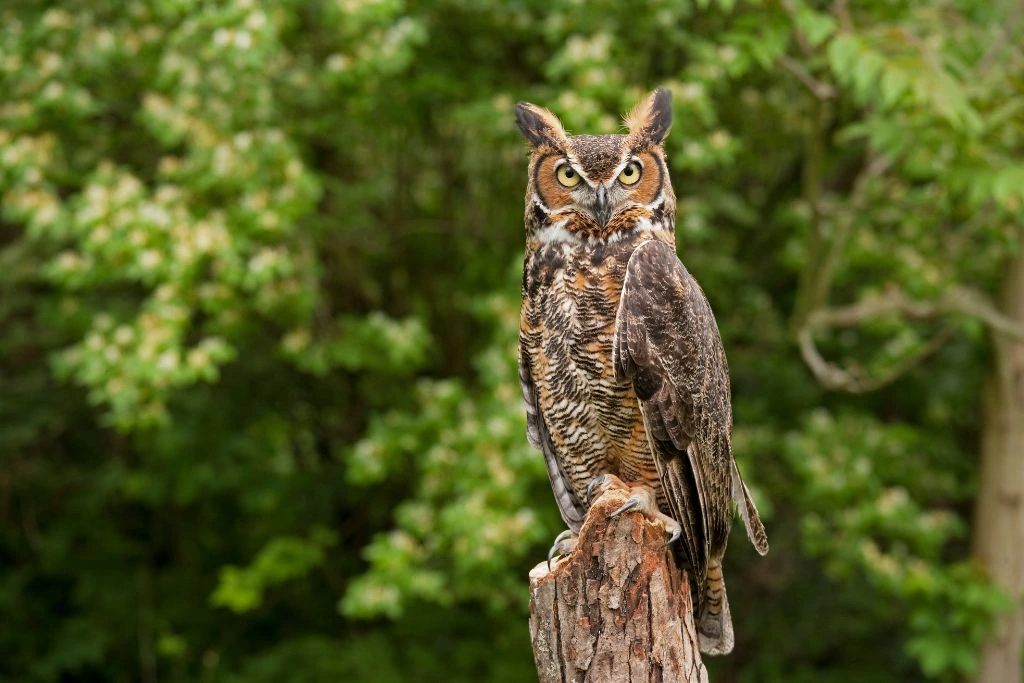
- Kingdom: Animalia
- Phylum: Chordata
- Class: Aves
- Order: Strigiformes
- Genus: Bubo
- Species: B. virginianum
The great horned owl, known scientifically as Bubo virginianus, is a magnificent bird that captures the imagination with its majestic presence and captivating hoots. With its prominent ear tufts and piercing yellow eyes, this owl is a true symbol of wisdom and stealth.
One of North America’s largest owls, the great horned owl, can grow to 25 inches tall. Its distinctive ear tufts, resembling horns, lend it a regal appearance. These tufts, however, are not ears but simply decorative feathers that help the owl blend into its surroundings.
The owl’s mottled brown and gray plumage helps it ambush prey in the treetops. Their diet includes small mammals, such as rabbits and squirrels, birds, reptiles, and even other owls.
Regarding life expectancy, great horned owls can live up to 15 to 20 years in the wild. Habitat loss, vehicle collisions, and pesticides may shorten their longevity.
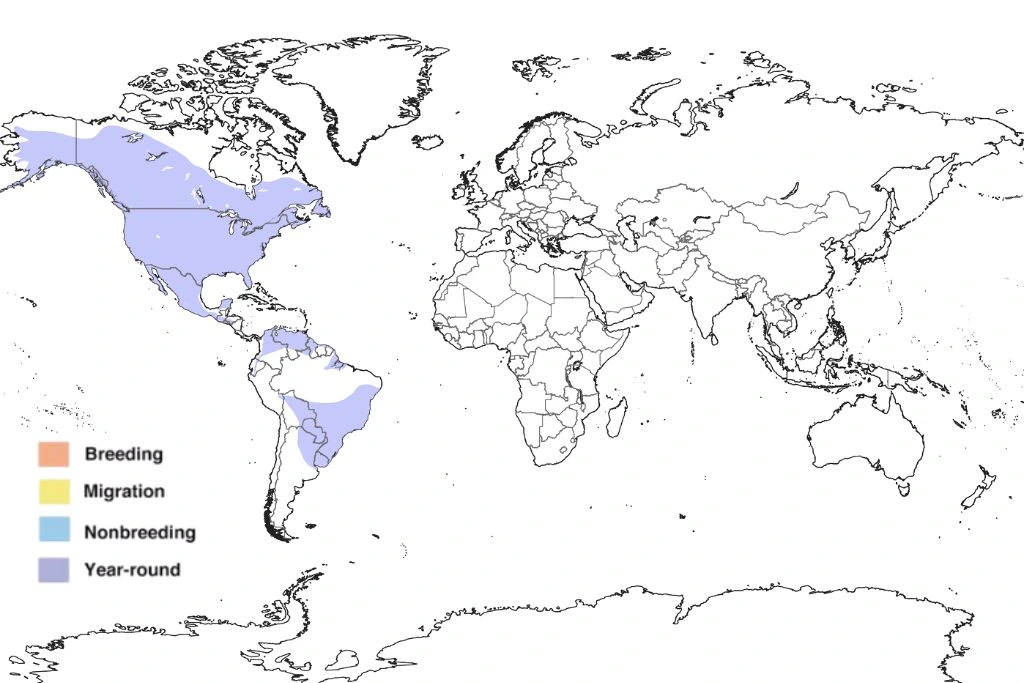
For bird enthusiasts in Michigan, you have a chance to spot these majestic creatures throughout the state. Great horned owls are commonly found in forests, woodlands, and suburban areas.
2. Barred Owl
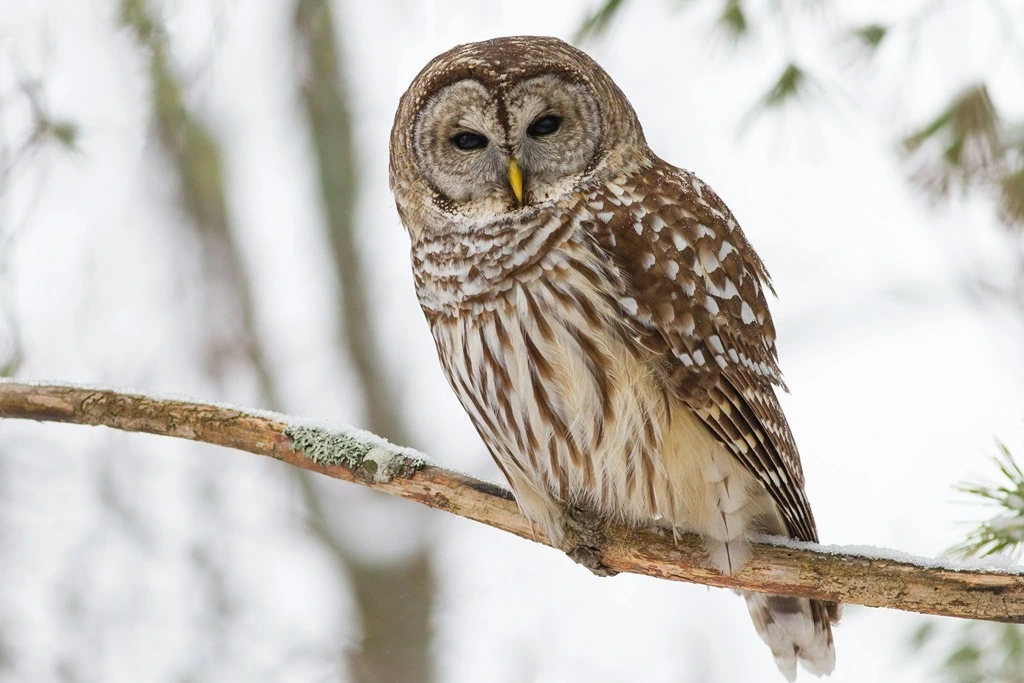
- Kingdom: Animalia
- Phylum: Chordata
- Class: Aves
- Order: Strigiformes
- Genus: Strix
- Species: S. varia
Barred owls (Strix varia) fascinate birdwatchers with their unique traits and behavior. These stunning birds have found homes in North American woodlands, including Michigan.
One of the most distinctive features of the barred owl is its beautiful plumage. Its large, round head is adorned with dark brown eyes that embody wisdom and mystery. The soft feathers on their bodies display a unique pattern of horizontal bars, hence their name.
Their facial disc – a ring of feathers around their face – acts as a natural “sound collector,” guiding noises to their ears with astonishing precision. This adaptation allows them to detect a mouse’s slightest rustle or a vole’s scurry.
Barred owls in Michigan prefer to make their homes in dense forests, where they find a wealth of suitable nesting sites and abundant prey. With its diverse array of woodland habitats, Michigan provides an ideal environment for these magnificent birds.
In the wild, barred owls generally live between 10 and 15 years. Some have lived in protected settings with little human disturbance for almost 20 years.
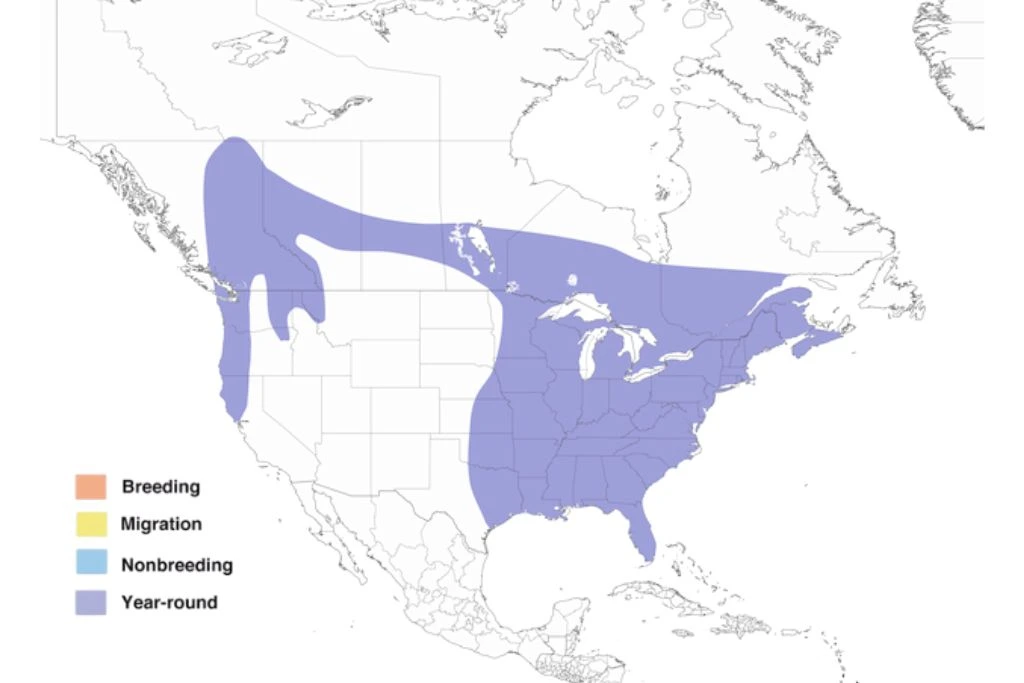
3. Barn Owl
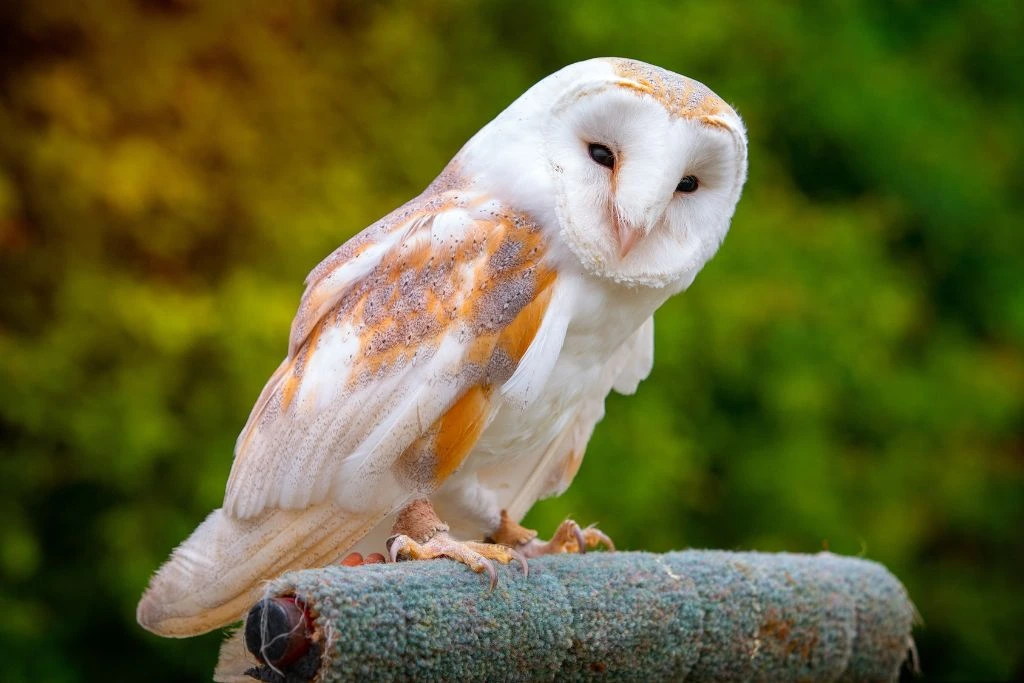
- Kingdom: Animalia
- Phylum: Chordata
- Class: Aves
- Order: Strigiformes
- Genus: Tyto
- Species: T. alba
Birdwatchers appreciate barn owls (Tyto alba) for their many intriguing traits. These nocturnal predators have adapted well to varied surroundings with their heart-shaped faces and dazzling white plumage.
Their heart-shaped face disk gathers and directs sound to their ears, accurately helping the bird pinpoint prey. Their soft, velvety feathers help them fly silently, ensuring a stealthy approach during nocturnal hunts.
These extraordinary birds have adapted to human activity and prefer open settings for hunting. Their versatility has allowed them to nest in barns, abandoned structures, and church steeples, earning them the name “barn owl.”
Barn owls can swallow their prey whole and regurgitate pellets of the undigested parts. These pellets of bones, hair, and feathers reveal the owl’s diet and help scientists understand local ecosystems.
In terms of life expectancy, barn owls have been known to live up to 15 years in the wild. Various factors, such as predation, habitat loss, and vehicle collisions, can significantly impact their lifespan.
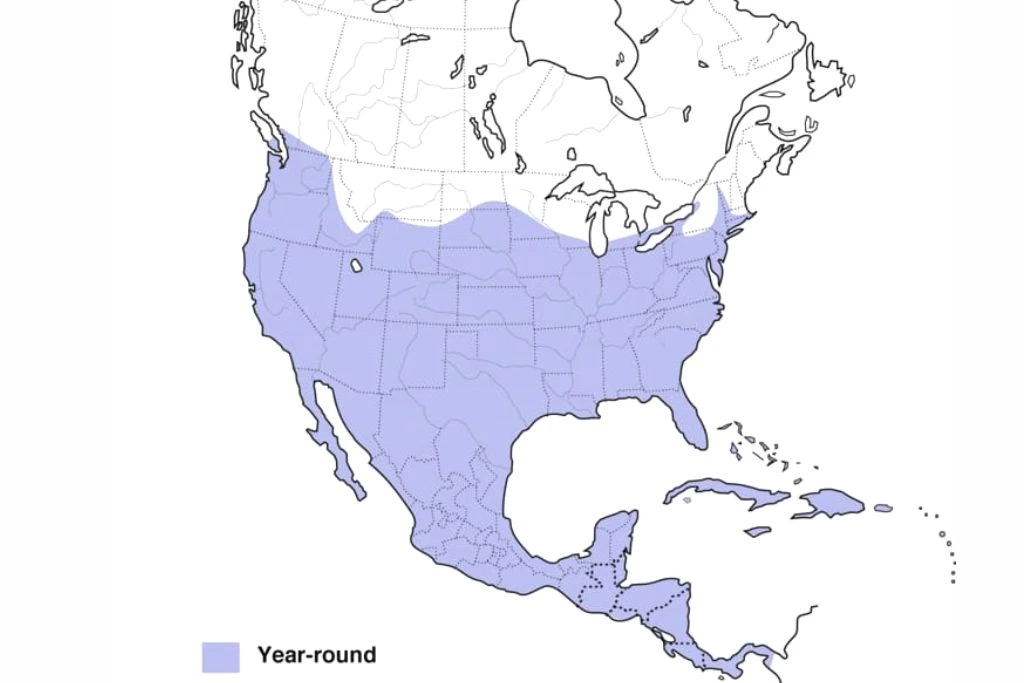
4. Long-Eared Owl
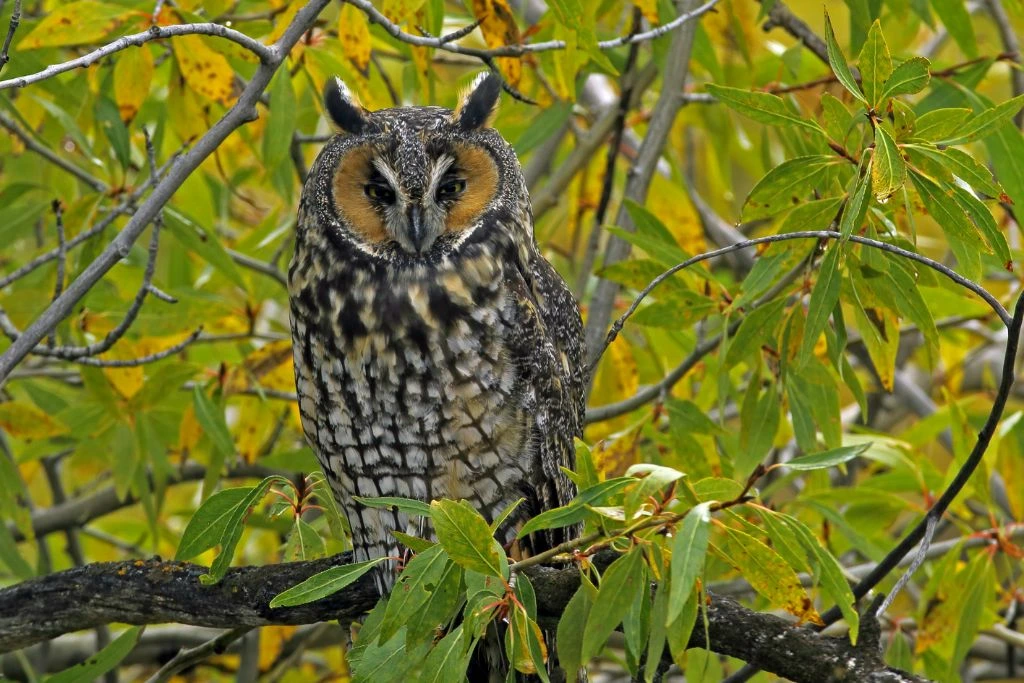
- Kingdom: Animalia
- Phylum: Chordata
- Class: Aves
- Order: Strigiformes
- Genus: Asio
- Species: A. otus
Long-eared owls (Asio otus) are named for their long feathers that mimic ears. These tufts are not ears but merely decorative feathers that enhance their allure.
With a small body and a 35-inch wingspan, they can quickly move through dense woods. These lovely birds blend nicely with their natural surroundings with their mosaic of brown, black, and cream colors.
They have been seen in Michigan’s deep Upper Peninsula forests, Great Lakes woodlands, and suburban areas with plenty of tree cover. Visit their preferred habitats in the morning or evening to see these elusive owls as they delicately emerge from the shadows to hunt.
Long-eared owls can live up to 10 years in the wild, but the usual lifespan is 4 to 5.
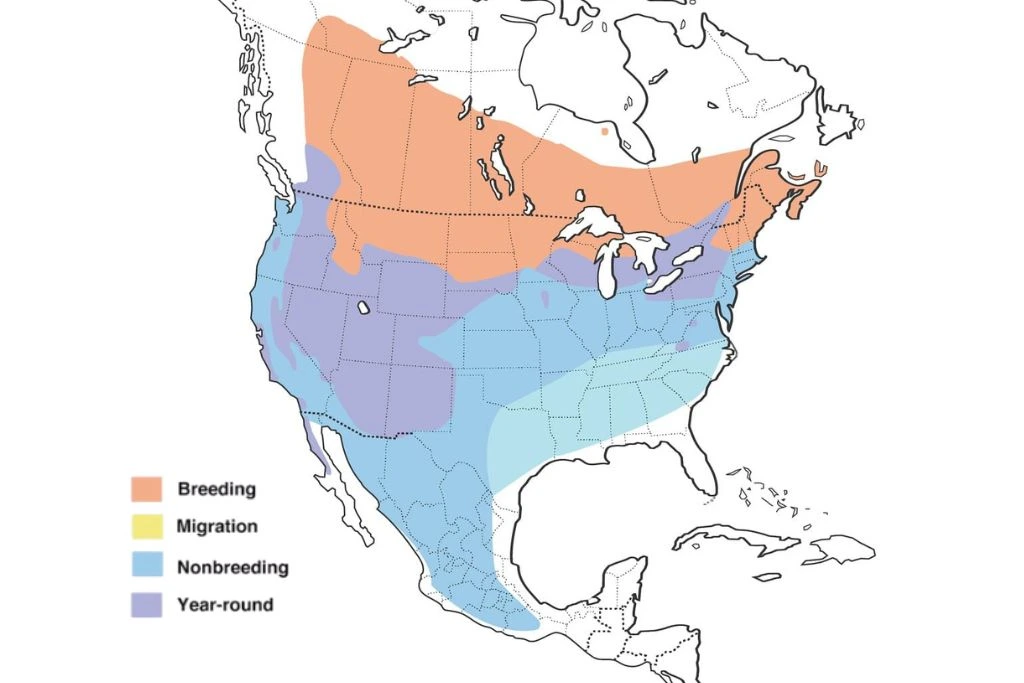
5. Short-Eared Owl
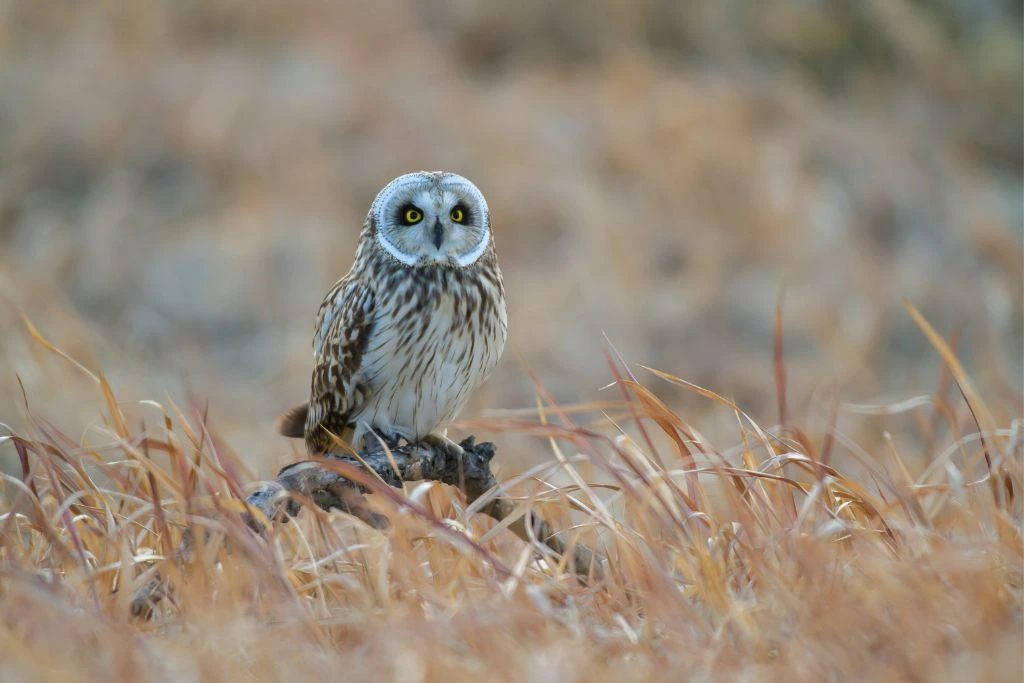
- Kingdom: Animalia
- Phylum: Chordata
- Class: Aves
- Order: Strigiformes
- Genus: Asio
- Species: A. flammeus
Characterized by its short, ear-like tufts and striking facial disc, the short-eared owl (Asio flammeus) boasts a distinctive appearance. Its mottled brown feathers, tinged with streaks of white, allow it to blend seamlessly with its surroundings. These colorations serve as excellent camouflage, enabling the owl to remain hidden during daylight hours.
This medium-sized owl hunts silently and swiftly with a wingspan of 40 inches. Unlike most owls, it is primarily active during dawn and dusk, making it crepuscular. It hunts tiny mammals like mice and voles, which are most active during twilight.
Despite its name, the “ears” of the short-eared owl are not actual ears but merely feather tufts that resemble ears. These tufts serve a purpose in communication and signaling between individuals. This owl attracts mates with aerial acrobatics and wing-clapping.
With a life expectancy of around 4 to 7 years, the short-eared owl faces various challenges in its natural habitat. Loss of suitable nesting and foraging areas and habitat fragmentation pose significant threats to its population.
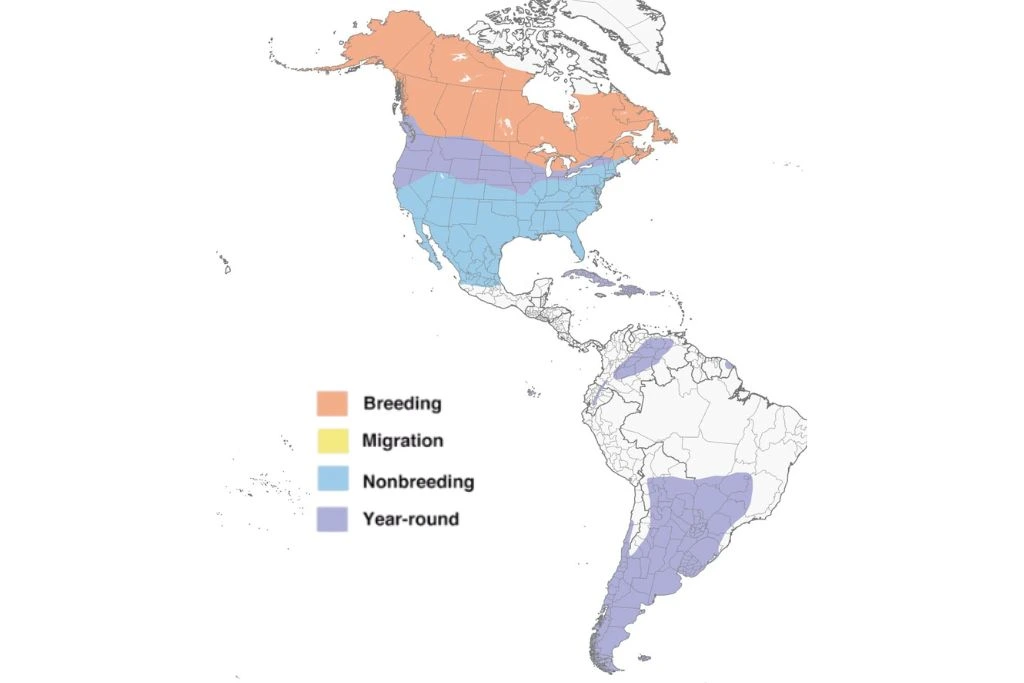
6. Northern Saw-Whet Owl
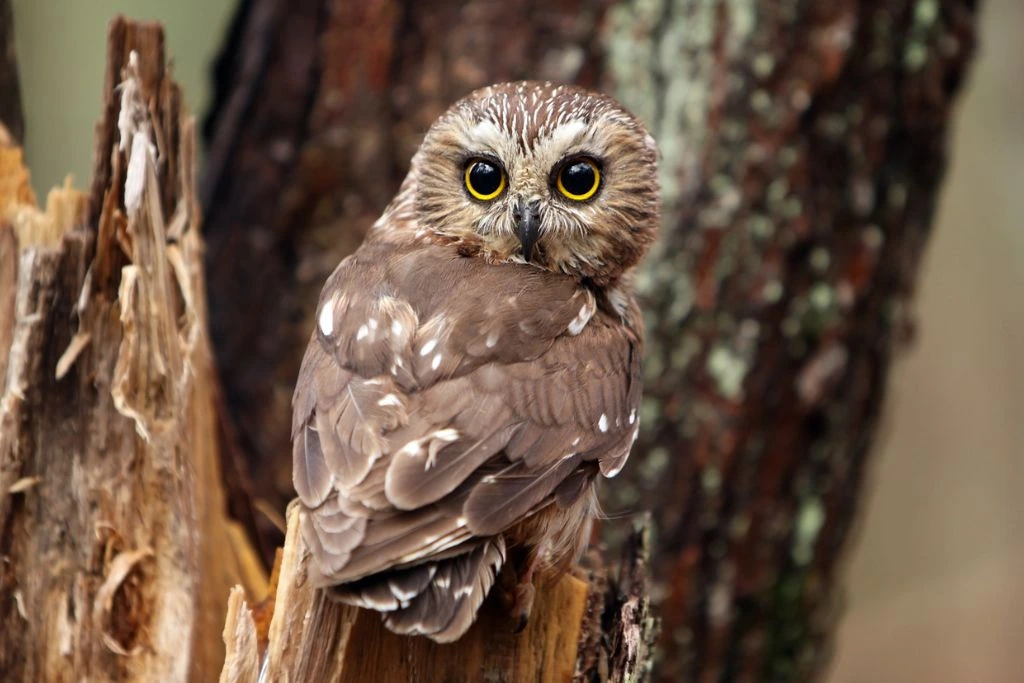
- Kingdom: Animalia
- Phylum: Chordata
- Class: Aves
- Order: Strigiformes
- Genus: Aegolius
- Species: A. acadicus
The northern saw-whet owl (Aegolius acadicus) charms birdwatchers with its cryptic appearance and behavior. These 7- to 8-inch owls weigh 2.5 ounces and have unique traits and adaptations.
Found across North America’s boreal and temperate forests, the northern saw-whet owl thrives in diverse habitats. They like deep forested woods with deciduous trees for daytime roosting and nighttime prey. These owls possess remarkable adaptations to their surroundings.
In the dim light of dusk and dawn, their huge forward-facing eyes let them spot and attack their victim. Their brown and cream feathers mix with tree bark, hiding them from predators and humans.
Northern saw-whet owls acquired their unique name from the sound they make, resembling the sharpening of a saw. It is a soft, repetitive whistle that sounds like “saw-whet.”
Despite being tiny, they have a large appetite for small mammals like mice and voles. Remarkably, they can consume up to their body weight in prey each night, making them efficient and agile hunters.
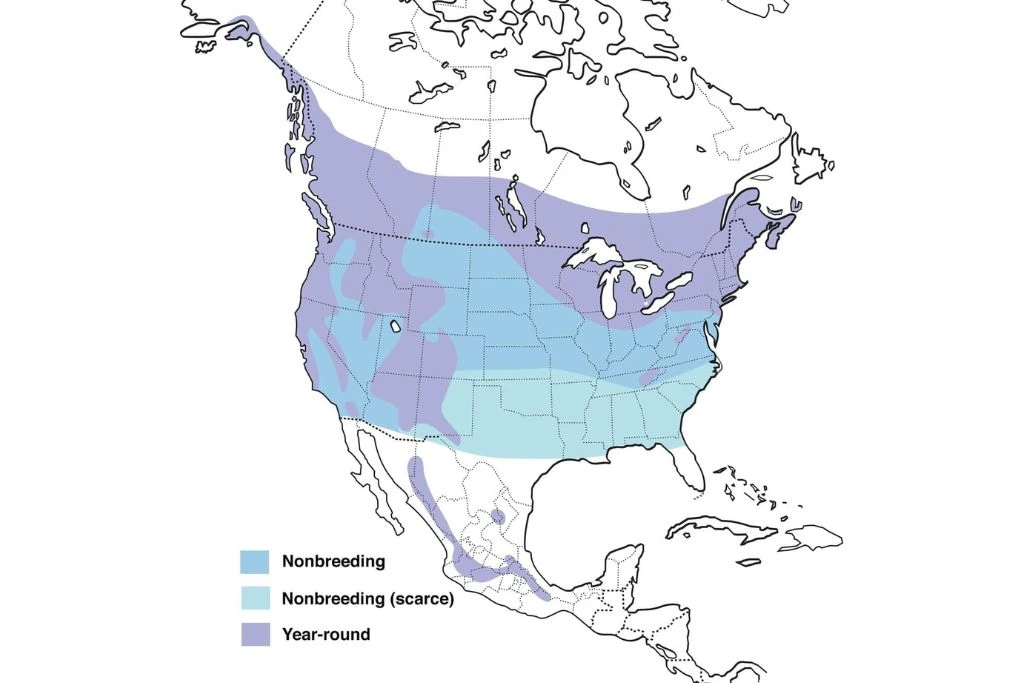
In terms of life expectancy, northern saw-whet owls have an average lifespan of 4 to 5 years in the wild. Due to good conditions and lack of predation, some have lived up to 10 years.
7. Eastern Screech Owl
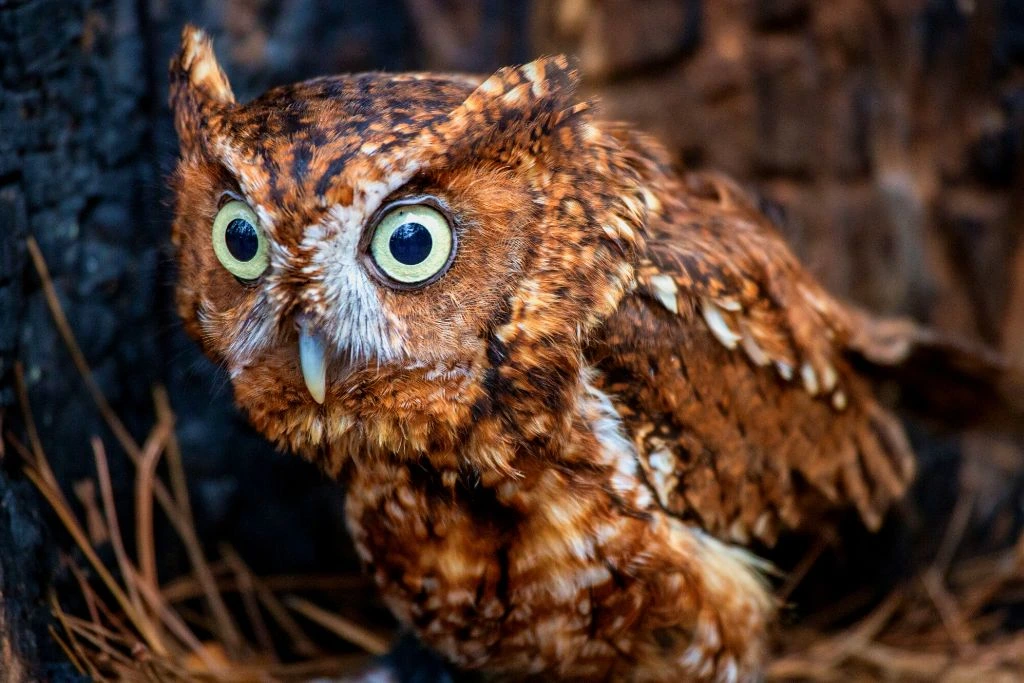
- Kingdom: Animalia
- Phylum: Chordata
- Class: Aves
- Order: Strigiformes
- Genus: Megascops
- Species: M. asio
The eastern screech owl (Megascops asio) is 6 to 10 inches long and has ear tufts resembling little horns. Their grayish-to-reddish-brown plumage helps these owls blend into their wooded environments. Their powerful talons and hooks make them dangerous night hunters, preying on small mammals, insects, and other birds.
Adaptation is the key to survival, and eastern screech owls have honed their skills. They possess exceptionally sharp hearing, which helps them locate prey in the dark using sound alone. Their ability to spin their heads 270 degrees allows them to see potential predators or prey from practically any angle.
They can produce various vocalizations, including eerie trills, whinnies, and haunting calls resembling a horse’s neigh. These distinct vocalizations help them communicate with their mates and establish their territories.
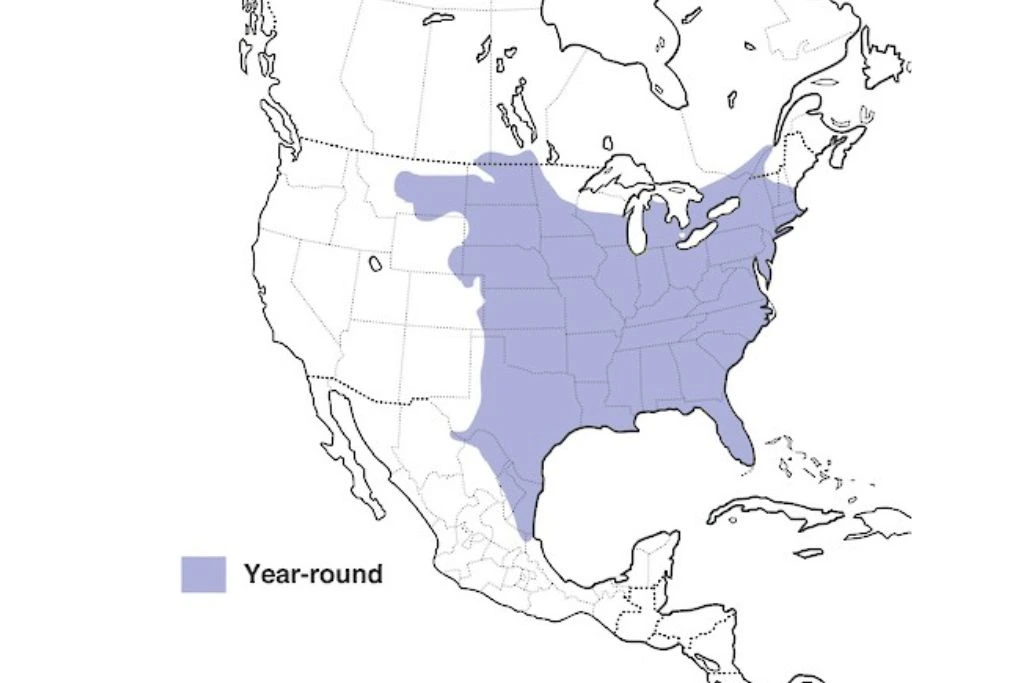
Eastern screech owls have a relatively long lifespan for a small bird, often reaching up to 10 years in the wild. These fascinating animals are found throughout Michigan in deciduous forests and wooded places with plenty of cover and prey.
8. Snowy Owl
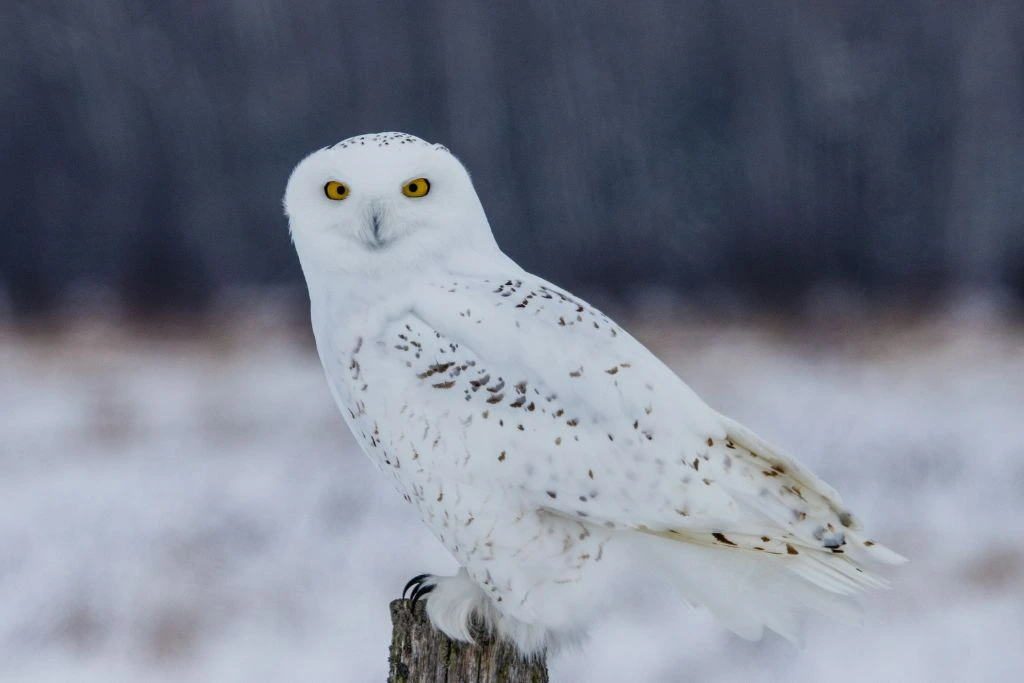
- Kingdom: Animalia
- Phylum: Chordata
- Class: Aves
- Order: Strigiformes
- Genus: Bubo
- Species: B. scandiacus
These magnificent birds, known scientifically as Bubo scandiacus, have unique traits. The snowy owl’s white plumage blends very well with its Arctic tundra and open field winter habitat, making it enchanting. Their large round heads, piercing yellow eyes, and sharp, curved beaks further emphasize their regal and powerful presence.
These remarkable birds are well adapted to survive in harsh, cold environments. Their thick plumage is a superb insulator, keeping them warm even in freezing temperatures.
Snowy owls sometimes nest south of their Arctic range in North America and Eurasia in the winter. These majestic birds winter in Michigan, especially the Upper Peninsula and northern Lower Peninsula. Birdwatchers and environment lovers can see these charming critters at Whitefish Point and Tawas Point.
In terms of life expectancy, snowy owls typically live up to 10 to 15 years in the wild. Some live into their 20s. Predation, food availability, and human disruptions affect their lifetime.
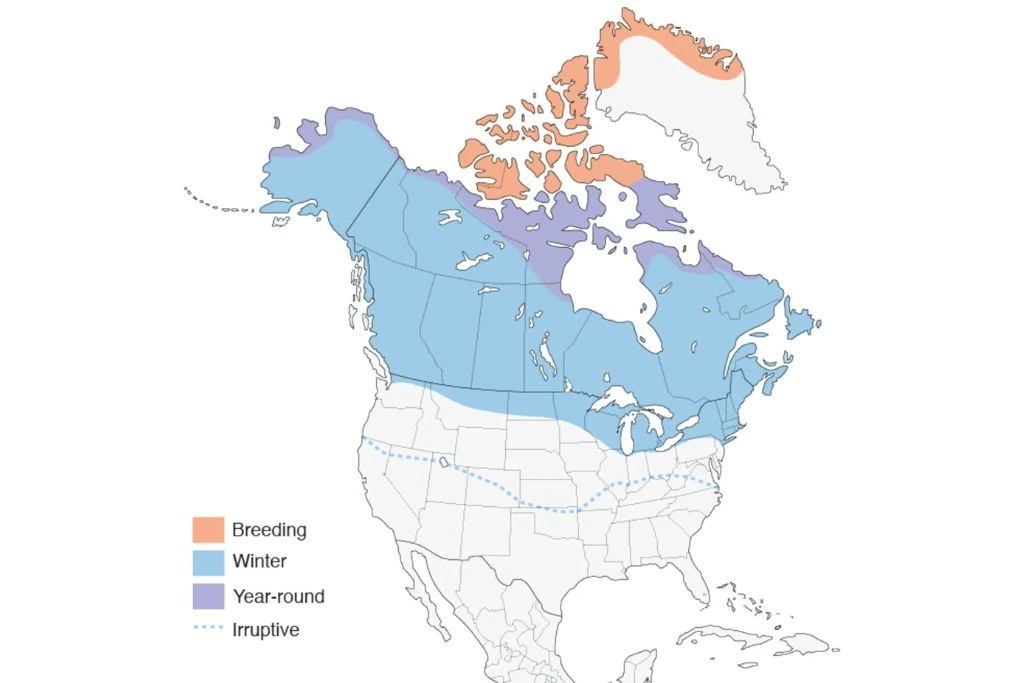
9.Great Gray Owl
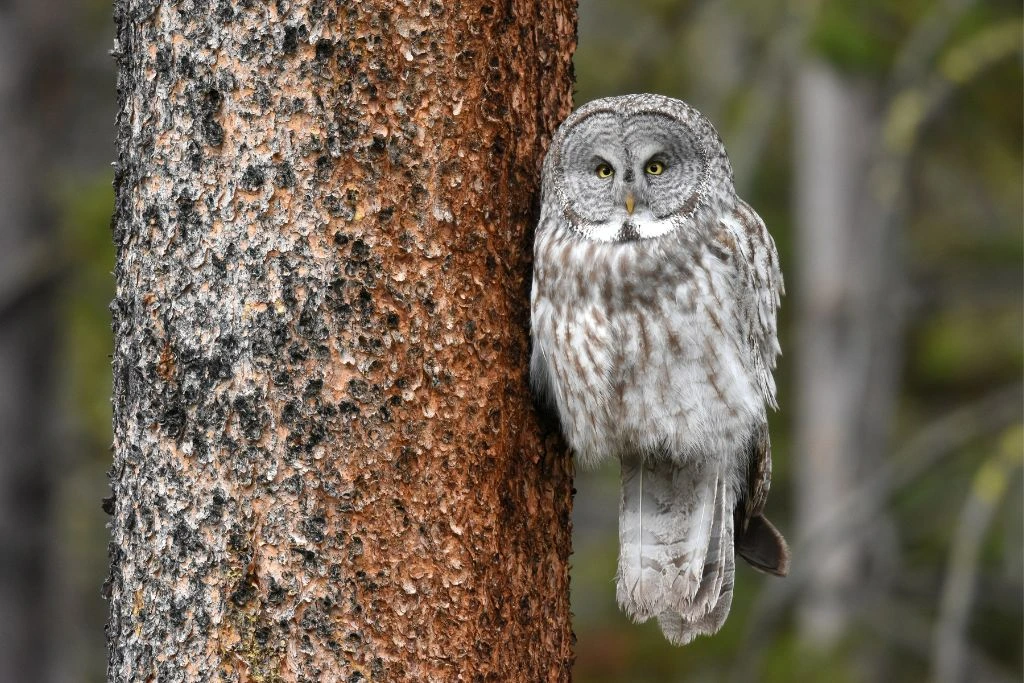
- Kingdom: Animalia
- Phylum: Chordata
- Class: Aves
- Order: Strigiformes
- Genus: Strix
- Species: S. nebulosa
The beautiful great gray owl (Strix nebulosa) enchants birdwatchers with unique adaptations. With its large size and striking facial disk, this is one of North America’s most iconic and elusive birds.
The great gray owl, the largest owl in North America at 33 inches, is known for its distinctive colors and size. Its smooth, dense feathers merge seamlessly into its woodland surroundings.
One of the great gray owl’s most striking features is its face disk, a circular arrangement of feathers around its eyes that acts like a satellite dish to focus sound waves into its ears. This exceptional adaptation enhances the owl’s hearing and accurately helps it locate prey.
These magnificent birds have a unique asymmetrical arrangement of their ear openings. Their adaptation lets them locate prey even under deep snow by detecting sound at different times. They are also known for their silent flight, thanks to the fringed feathers on their wings that muffle the sound of air passing through them.
As for their life expectancy, the great gray owl can live up to 13 years in the wild. Habitat destruction, climate change, and human involvement can threaten their survival and lifespan.
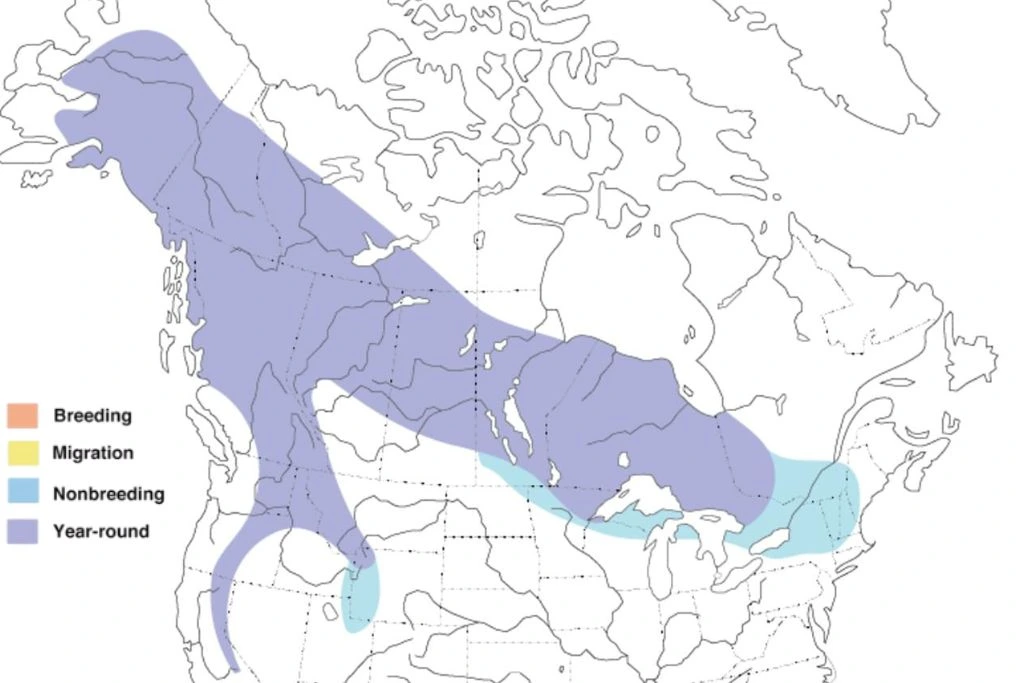
10. Northern Hawk-Owl
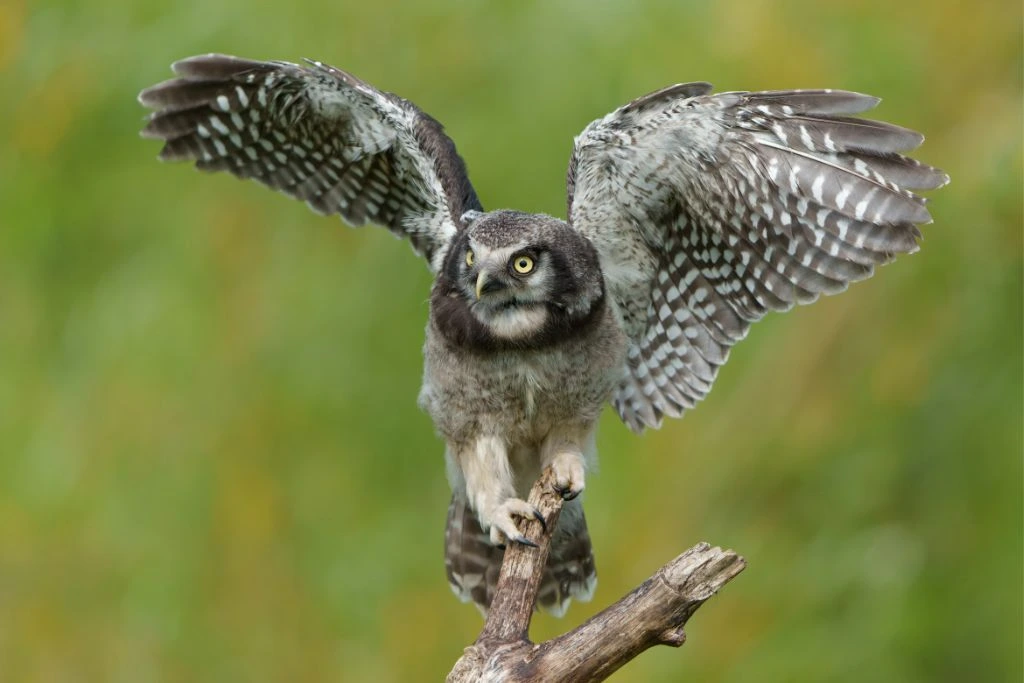
- Kingdom: Animalia
- Phylum: Chordata
- Class: Aves
- Order: Strigiformes
- Genus: Surnia
- Species: S. ulula
The northern hawk-owl (Surnia ulula) is a medium-sized owl that measures 15 to 18 inches. Its striking appearance is enhanced by a unique facial disk composed of dark feathers that encircle its piercing yellow eyes. The owl’s plumage showcases shades of brown, black, and white, providing excellent camouflage in its habitat.
Adaptations play a vital role in the northern hawk-owl’s survival. Its sharp talons allow it to grasp and hold prey, while its long tail feathers help it fly. Unlike other owls, they can see and hear well enough to find and catch prey in the dark.
These birds have a lifespan of 8 to 12 years and can spin their heads 270 degrees to scan their surroundings. Their typical hunting behavior, reminiscent of a hawk, is reflected in their name.
Despite being called an owl, the northern hawk-owl does not possess the typical “hoot” associated with owls. Instead, it makes vocalizations, including high-pitched calls and whistles, during territorial displays and courtship rituals.
In the picturesque state of Michigan, the northern hawk-owl can be spotted in select locations. It prefers forested woods in the Upper Peninsula and northern Lower Peninsula.
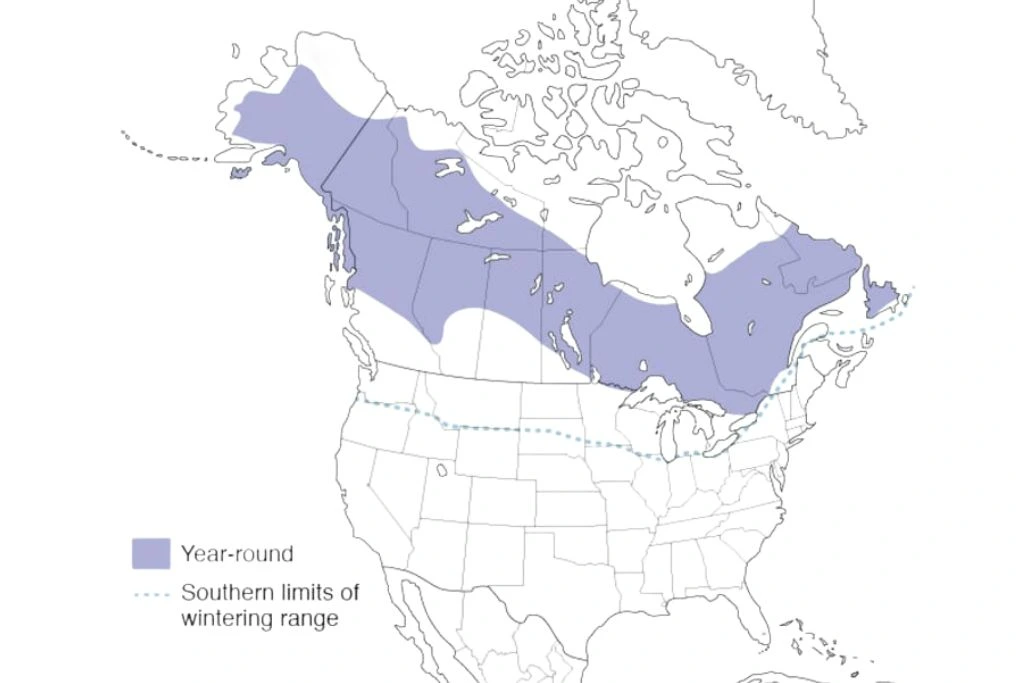
11. Boreal Owl
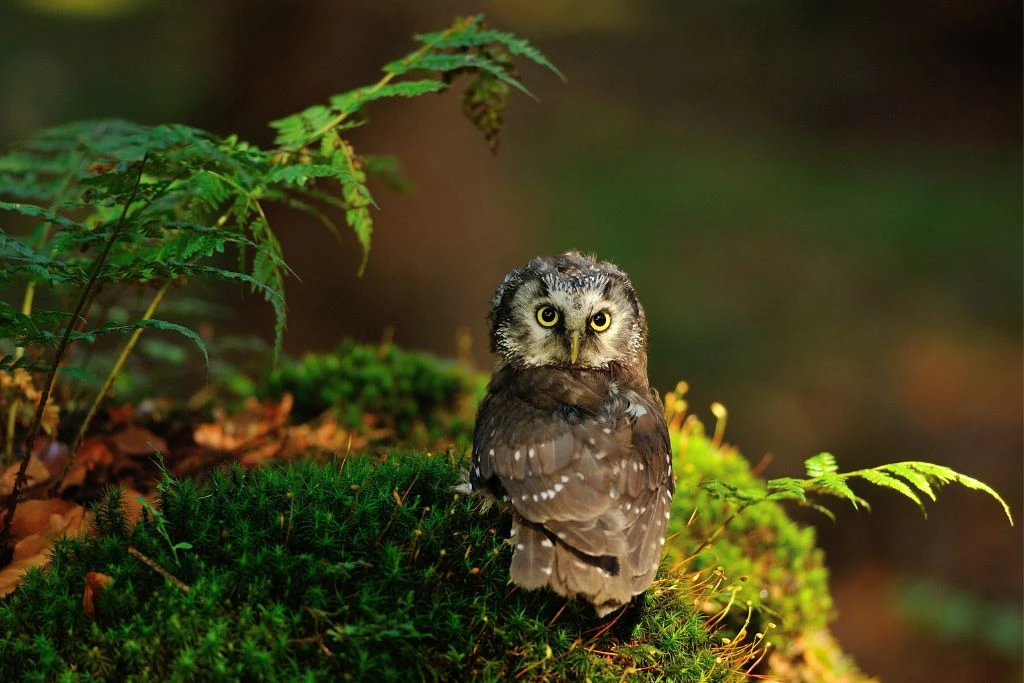
- Kingdom: Animalia
- Phylum: Chordata
- Class: Aves
- Order: Strigiformes
- Genus: Aegolius
- Species: A. funereus
The boreal owl (Aegolius funereus) is a tiny marvel of nature, standing 9 to 11 inches tall. Its round head is adorned with striking yellow eyes, providing exceptional vision, especially in low-light conditions. The owl’s dark gray and white plumage blends with tree bark, making it invisible.
The owl can hear even the smallest woodland rustle because of its fluffy face disc. With keen hearing and acute vision, this owl is a masterful nocturnal hunter. Its wings, characterized by soft feathers, facilitate silent flight, allowing the boreal owl to approach its prey unnoticed.
With an average life expectancy of 4 to 10 years, these birds navigate their forested homes with exceptional agility. Boreal owls fiercely defend their territory from intruders, especially larger birds, despite their small size.
This Michigan owl sounds like a sequence of hollow toots or whistles, providing a lovely symphony in boreal woodlands.
In Michigan’s beautiful northern regions, the boreal owl can be seen. This intriguing bird is more likely to be seen in the Upper Peninsula and northern Lower Peninsula.
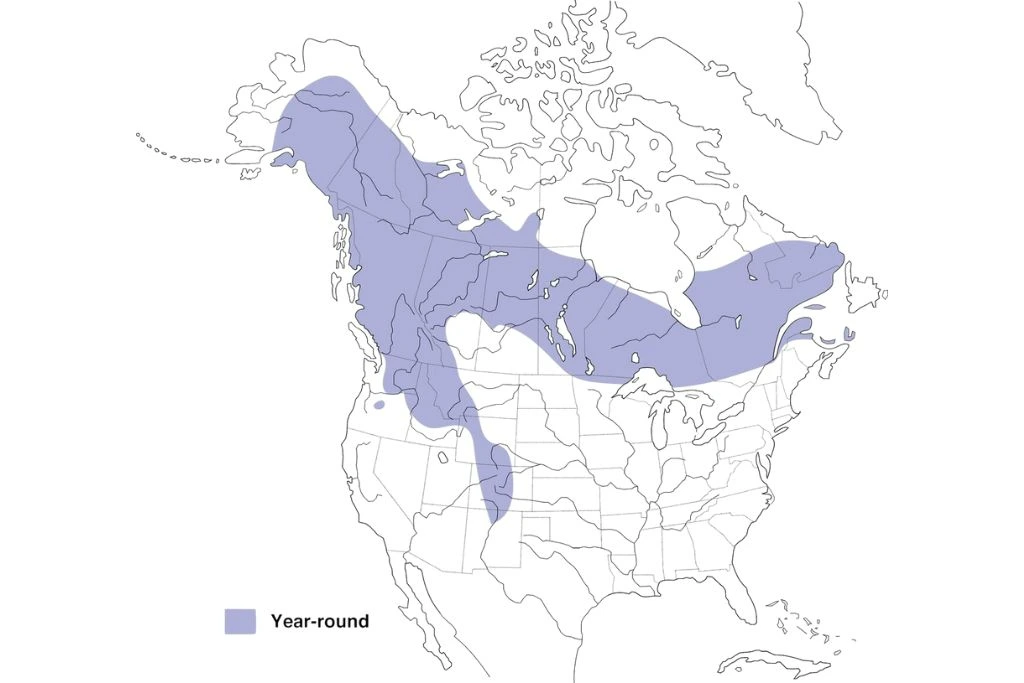
12. Burrowing Owl
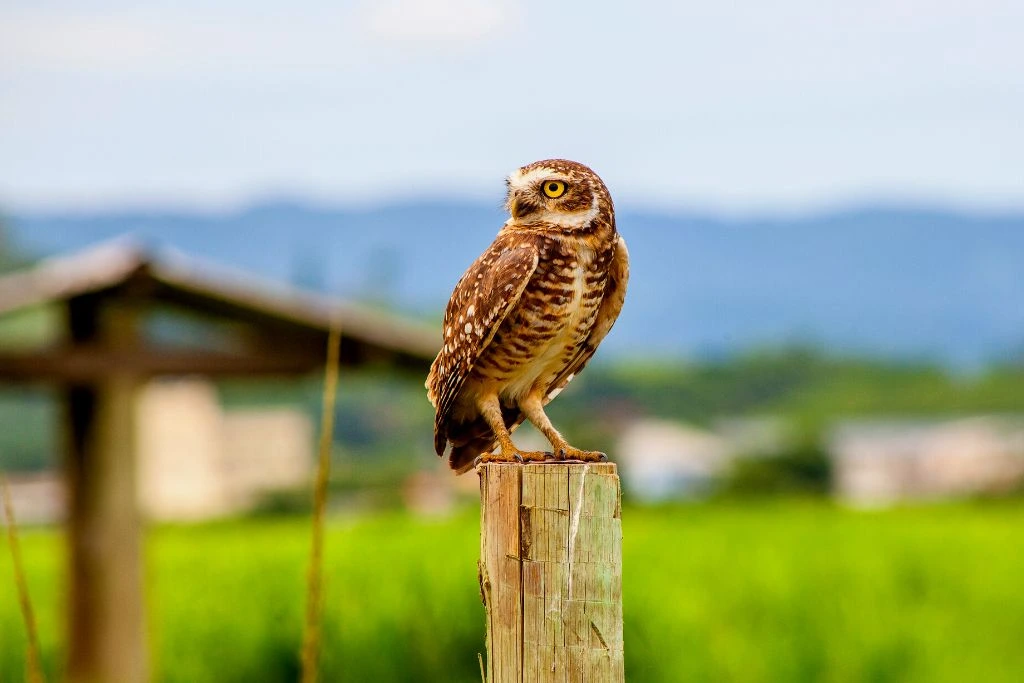
- Kingdom: Animalia
- Phylum: Chordata
- Class: Aves
- Order: Strigiformes
- Genus: Athene
- Species: A. cunicularia
The burrowing owl (Athene cunicularia) weighs 5 to 8 ounces and measures 9 to 11 inches. Sporting a sandy brown plumage with white spots, this owl exhibits a charming and distinct appearance. Its long legs set the burrowing owl apart, perfect for traversing the ground and hunting for its prey.
They thrive in deserts and wide grasslands due to their unique adaptations. Its long legs aid in hunting and enable it to move swiftly and navigate through its burrowed homes. As their name suggests, these owls nest in burrows dug by other animals, such as ground squirrels or prairie dogs.
Burrowing owls are diurnal, meaning they are most active during the day. Unlike many other owls, they can be seen perched on fence posts or small mounds near their burrows, watching their surroundings.
They can live up to 10 years in the wild, although most live 6 to 8. These magnificent birds can live longer with proper conservation and environmental protection.
While burrowing owls are not native to Michigan, they can be observed during their migration periods or as vagrant individuals. These attractive birds are more abundant in Western North America, where the wide-open expanses suit their burrowing lifestyle.
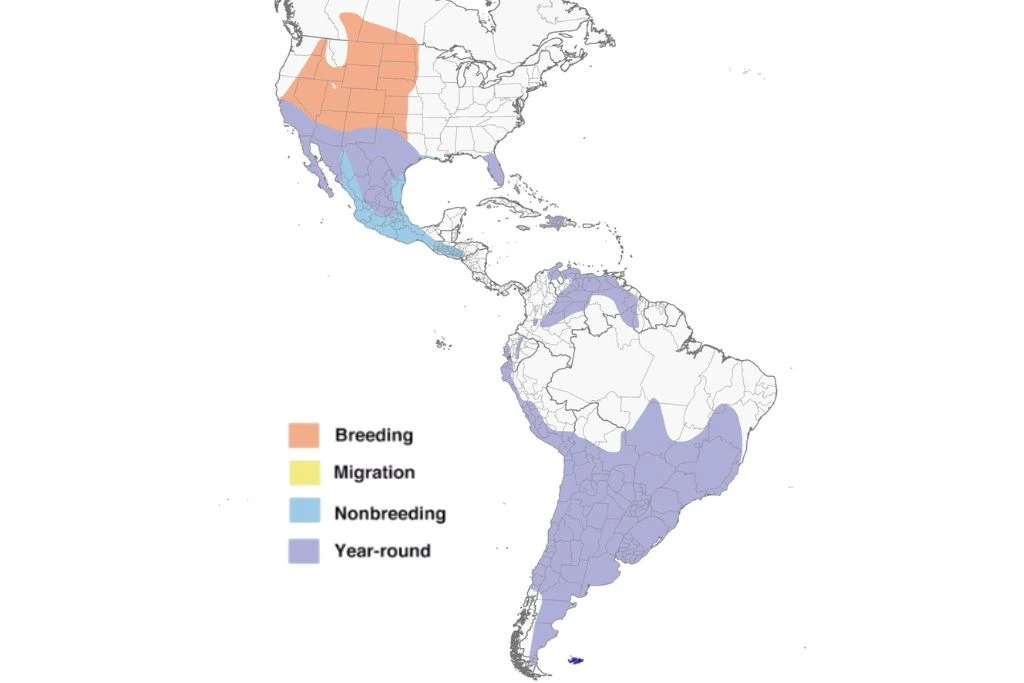
FAQs
What are the Most Common Owls in Michigan?
The most common owl species in Michigan are the great horned owl and the barred owl.
Are There any Rare or Endangered Owl Species in Michigan?
Yes, there are rare and endangered owl species in Michigan, such as the northern saw-whet owl and the short-eared owl.
Do Owls Migrate in and out of Michigan, or Are They Year-Round Residents?
Owls in Michigan can be both residents and migrants. Some species, like the great horned owl, live in Michigan year-round, while others, like the snowy owl, move in seasonally.
What is the Best Time of Year to see Owls in Michigan?
The best time of year to see owls in Michigan is winter, particularly from November to February. This is when some owl species migrate to Michigan or become more active, making them easier to spot.

